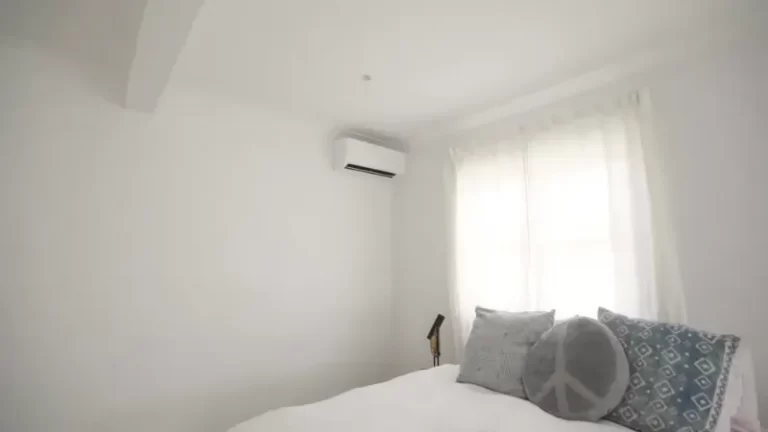High Superheat Low Subcooling [Causes, Symptoms, Diagnosis, and Solutions]
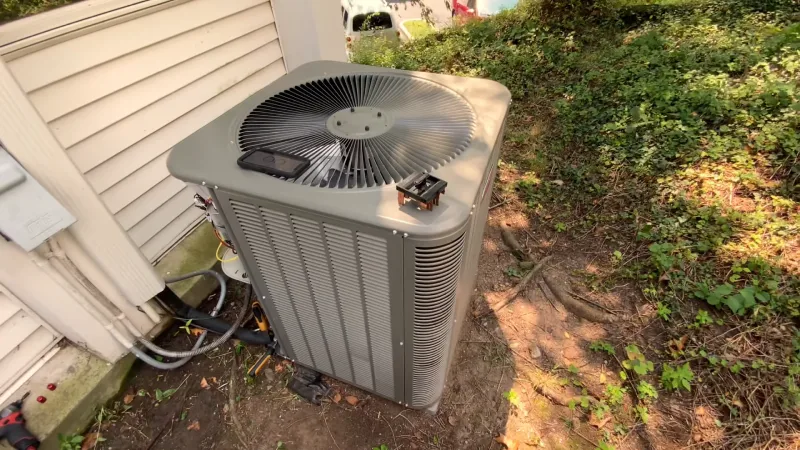
Low subcooling and high superheat are two conditions that can occur in a refrigeration system and indicate a problem with the system’s balance. Low subcooling refers to an insufficient amount of refrigerant in the condenser, which is the part of the system where the refrigerant releases the heat it has absorbed from the evaporator.
High superheat, on the other hand, refers to a lack of refrigerant in the evaporator, which is the part of the system where the refrigerant absorbs heat from the area being cooled. Maintaining a balance between these two conditions is crucial for the efficient operation of a refrigeration system and avoiding damage.
In this blog, we will discuss the causes, symptoms, diagnosis, and solutions for low subcooling and high superheat in a refrigeration system.
You'll Learn About
High Superheat Low Subcooling Condition
Low subcooling and high superheat are both conditions that can occur in a refrigeration system and indicate a problem with the system’s balance. Low subcooling means that there is an insufficient amount of refrigerant in the condenser, which is the part of the system where the refrigerant releases the heat it has absorbed from the evaporator.
This can cause the compressor to work harder and the system to be less efficient. High superheat, on the other hand, indicates that the amount of refrigerant in the evaporator is low or not sufficient.
The evaporator is the part of the system where the refrigerant absorbs heat from the area being cooled. A high superheat can cause the evaporator to freeze and the system to shut down. Both conditions can be caused by a variety of issues such as leaks, blocked or dirty filters, incorrect refrigerant charge, or faulty expansion valves.
It’s important to diagnose and fix the root cause of the problem to keep the system running efficiently and avoid damage.
Causes and Solutions
| Cause of High Superheat and Low Subcooling | Solution |
|---|---|
| Refrigerant Leaks | Locate and repair leaks, and properly charge the system with refrigerant. |
| Blocked or Restricted Airflow | Clean or replace air filters, and ensure proper airflow through the evaporator and condenser coils. |
| Incorrect Refrigerant Charge | Properly charge the system with refrigerant, and check for leaks. |
| Faulty Metering Device | Replace or repair the metering device, and properly charge the system with refrigerant. |
| Dirty or Blocked Condenser Coil | Clean or replace the condenser coil, and ensure proper airflow through the condenser. |
Effects on performance and efficiency
High superheat and low subcooling can cause the system to perform poorly and become less efficient. When the evaporator absorbs too much heat and the condenser does not hold enough liquid, the system will not be able to cool effectively, leading to reduced cooling capacity and increased energy consumption.
This can also cause damage to the system over time and lead to costly repairs or replacements. It’s important to address high superheat and low subcooling as soon as possible to prevent further damage and restore proper function to the system.
Causes of Low Subcooling and High Superheat
Leaks in the System
One of the most common causes of low subcooling and high superheat is a leak in the refrigeration system. These leaks can occur anywhere in the system and can cause a loss of refrigerant, leading to low subcooling and high superheat.
Blocked or Dirty Filters
Another cause of low subcooling and high superheat is dirty or blocked filters. These filters are responsible for removing contaminants from the refrigerant, and if they become clogged, they can restrict the flow of refrigerant, leading to low subcooling and high superheat.
Incorrect Refrigerant Charge
An incorrect refrigerant charge can also lead to low subcooling and high superheat. If there is too little or too much refrigerant in the system, it can cause an imbalance and lead to these conditions.
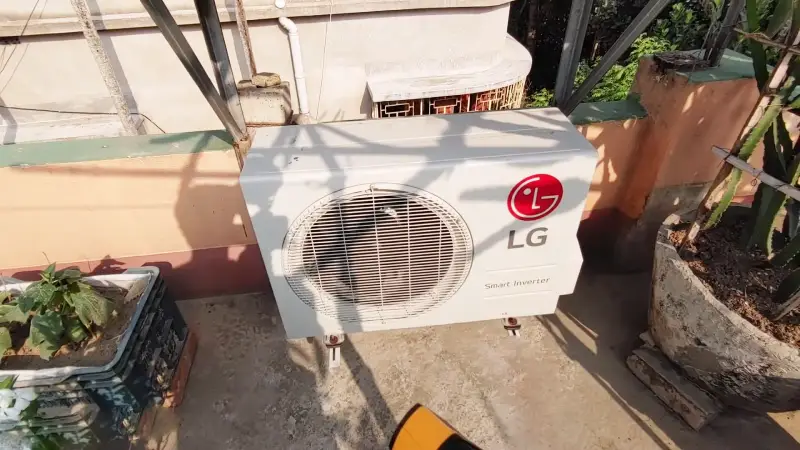
Faulty Expansion Valves
A faulty expansion valve can also cause low subcooling and high superheat. The expansion valve is responsible for controlling the flow of refrigerant from the condenser to the evaporator, and if it is not working correctly, it can cause an imbalance in the system.
Other Possible Causes
Other possible causes of low subcooling and high superheat include a faulty compressor, clogged condenser coils, or a malfunctioning thermostat. It’s important to diagnose the root cause of the problem to keep the system running efficiently and avoid damage.
Symptoms of Low Subcooling and High Superheat
Increased Energy Consumption
One of the symptoms of low subcooling and high superheat is increased energy consumption. When the refrigeration system is not running efficiently, it will consume more energy to achieve the same level of cooling.
Reduced Cooling Capacity
Another symptom of low subcooling and high superheat is reduced cooling capacity. This can be observed as the refrigeration system struggles to keep the area cool and may not be able to reach the desired temperature.
Frozen Evaporator Coils
Low subcooling and high superheat can also cause the evaporator coils to freeze over. This can be caused by a lack of refrigerant in the evaporator, which leads to a build-up of ice on the coils.
Compressor Overworking
If the compressor is overworking, it can be a sign of low subcooling and high superheat. A compressor that is running for long periods of time or making unusual noises may be a sign that there is a problem with the refrigeration system.
Other Signs to Look for
Other signs to look for include high head pressure, low suction pressure, and a high temperature difference between the suction and discharge lines. These symptoms may indicate a problem with the system’s balance and should be addressed promptly to avoid further issues.
Diagnosing Low Subcooling and High Superheat
How to Measure Subcooling and Superheat
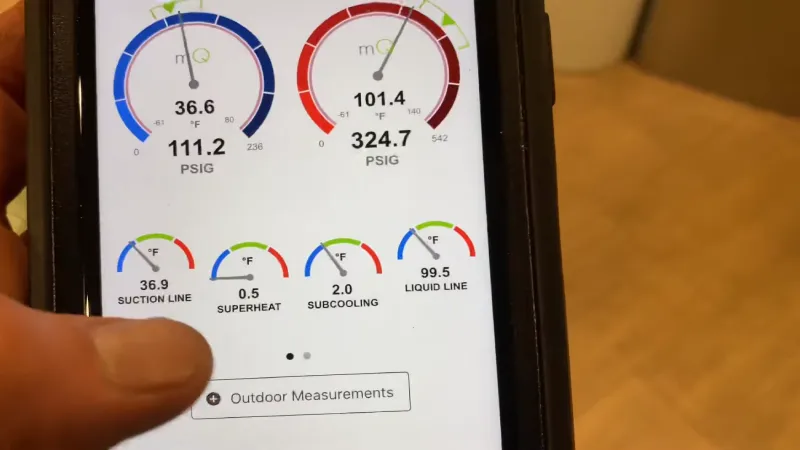
To diagnose low subcooling and high superheat, you will need to measure the subcooling and superheat in the system. Subcooling is measured by taking the temperature of the liquid refrigerant at the outlet of the condenser, while superheat is measured by taking the temperature of the refrigerant vapor at the outlet of the evaporator. The difference between the liquid refrigerant temperature and the vapor temperature is the superheat.
Tools and Equipment Needed
To measure subcooling and superheat, you will need a thermometer and a pressure gauge. A thermocouple or thermistor can also be used to measure the refrigerant temperature. Additionally, you may need a set of manifold gauges, which are used to measure the pressure of the refrigerant in the system.
Steps to Follow for Diagnosis
- Measure the refrigerant pressure at the condenser outlet.
- Measure the temperature of the refrigerant at the condenser outlet.
- Measure the refrigerant pressure at the evaporator outlet.
- Measure the temperature of the refrigerant at the evaporator outlet.
- Compare the measured values to the manufacturer’s specifications.
- Determine the subcooling by subtracting the condenser temperature from the liquid line temperature.
- Determine the superheat by subtracting the evaporator temperature from the suction line temperature.
- Compare the subcooling and superheat values to the manufacturer’s specifications.
- Check for any other issues such as leaks, faulty components or dirty filters that could cause the low subcooling and high superheat.
- Once the issue is identified, proceed to repair or replace the faulty component and re-check the system for proper operation.
It’s important to follow the manufacturer’s specifications to determine whether the system is operating within the normal range. If it is not, then it is best to call a professional to repair or service the system to avoid causing further damage or injury.
Fixing Low Subcooling and High Superheat
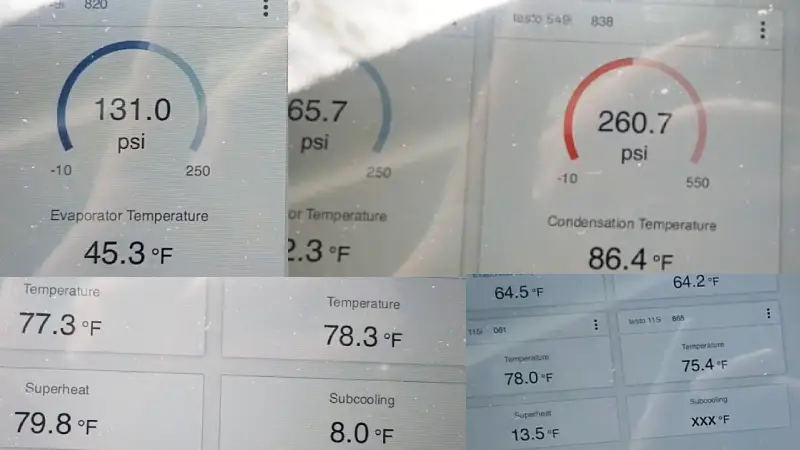
Identifying the root cause
The first step in fixing high superheat and low subcooling is to identify the root cause of the problem. This can be done by performing a thorough inspection of the system, including checking for refrigerant leaks, measuring superheat and subcooling, and checking for blocked or restricted airflow. Once the root cause is identified, the appropriate steps can be taken to fix the problem.
How to Properly Charge the Refrigerant?
If low subcooling and high superheat is caused by an incorrect refrigerant charge, it can be corrected by properly charging the refrigerant. This can be done by using a refrigerant charging cylinder and a set of manifold gauges.
First, turn off the power to the refrigeration unit and then attach the manifold gauges to the system. Next, measure the pressure of the refrigerant in the system and compare it to the manufacturer’s specifications.
If the pressure is low, add refrigerant to the system until it reaches the correct level.
How to Clean or Replace Filters?
If low subcooling and high superheat is caused by blocked or dirty filters, it can be fixed by cleaning or replacing the filters. To clean the filters, remove them from the unit and wash them with warm water and a mild detergent.
Allow the filters to dry completely before re-installing them. If the filters are too dirty or damaged, they should be replaced with new ones.
How to Repair Leaks?
If low subcooling and high superheat are caused by leaks in the system, they can be fixed by repairing the leaks. To locate leaks, use a leak detector and follow the manufacturer’s instructions. Once the leaks are located, repair them using a refrigerant leak sealant or by replacing the damaged component.
Regular maintenance to prevent future issues
Regular maintenance of the system can prevent future issues with high superheat and low subcooling. This includes regular cleaning or replacement of air filters, checking and cleaning the evaporator and condenser coils, and inspecting the system for refrigerant leaks. By performing regular maintenance, the system will operate efficiently and effectively, and potential issues can be addressed before they become major problems.
How to Replace Expansion Valves?
If low subcooling and high superheat is caused by a faulty expansion valve, it can be fixed by replacing the valve. To replace the expansion valve, turn off the power to the refrigeration unit, remove the old valve and install the new one. It’s best to refer to the manufacturer’s instructions for specific instructions on how to replace the expansion valve.
It’s important to note that all these actions should be done by a professional, because a wrong action can cause further damages or even injuries.
How to Miaintain the Refrigeration System Properly?
Regular Maintenance
Regularly maintaining your refrigeration system can help prevent low subcooling and high superheat by identifying and addressing potential issues before they become major problems. This can include cleaning or replacing filters, checking for leaks, and measuring subcooling and superheat levels.
Properly Size the System
Ensuring that your refrigeration system is properly sized for the space it’s cooling can help prevent low subcooling and high superheat. A system that is too small may not be able to handle the cooling load, leading to high superheat. On the other hand, a system that is too large may lead to low subcooling.
Check the Condenser Coils
The condenser coils are responsible for releasing heat from the refrigerant, so it’s important to keep them clean and free of debris. A buildup of dirt and grime on the coils can impede the heat transfer process, leading to low subcooling.
Monitor the Refrigerant Level
The refrigerant level in your system should be monitored regularly to ensure that it’s at the correct level. A low refrigerant level can lead to low subcooling and high superheat, while an overcharged system can cause other issues.
Check the Thermostatic Expansion Valve (Txv)
The TXV is responsible for controlling the flow of refrigerant into the evaporator coils. A malfunctioning or improperly adjusted TXV can lead to low subcooling and high superheat. It is recommended to check the TXV for proper operation and adjust it if necessary.
Frequently Asked Questions
What causes high superheat and low subcooling in an air conditioning system?
High superheat and low subcooling can occur in an air conditioning system due to a variety of factors. The most common causes include refrigerant leaks, blocked or restricted airflow, incorrect refrigerant charge, and faulty metering devices.
Refrigerant leaks can occur due to damage to the system or a lack of regular maintenance, and can cause the refrigerant level to drop, leading to high superheat. Blocked or restricted airflow can occur due to dirty air filters or clogged ductwork, which can cause the system to work harder than necessary, leading to high superheat.
Incorrect refrigerant charge can occur due to improper installation or maintenance of the system, and can cause the system to either overcharge or undercharge, leading to high superheat. Finally, faulty metering devices, such as thermostatic expansion valves or capillary tubes, can cause the system to malfunction, leading to high superheat.
How can I measure superheat and subcooling in an air conditioning system?
Measuring superheat and subcooling in an air conditioning system requires the use of special tools, such as a thermometer, a pressure gauge, and a calculator. To measure superheat, you will need to take the temperature of the refrigerant at the evaporator outlet and the suction line, and then calculate the difference between the two.
To measure subcooling, you will need to take the temperature of the refrigerant at the condenser outlet and the liquid line, and then calculate the difference between the two. It’s important to note that measuring superheat and subcooling should only be done by qualified professionals who are trained to handle refrigerant safely.
What is the Difference Between Subcooling and Superheat?
A: Subcooling and superheat are two important measures in a refrigeration system. Subcooling refers to the amount of heat absorbed by the refrigerant in the condenser before it reaches the metering device.
Superheat, on the other hand, refers to the amount of heat absorbed by the refrigerant in the evaporator after it leaves the metering device. In simple terms, subcooling measures the amount of refrigerant in the condenser, while superheat measures the amount of refrigerant in the evaporator.
Can Low Subcooling and High Superheat Occur at the Same Time?
A: Yes, low subcooling and high superheat can occur simultaneously in a refrigeration system. This typically happens when there is an insufficient amount of refrigerant in the system, either due to leaks, incorrect refrigerant charge, or a faulty expansion valve. When there is not enough refrigerant in the condenser, it results in low subcooling, and when there is not enough refrigerant in the evaporator, it results in high superheat.
How Does Low Subcooling and High Superheat Affect the Performance of a Refrigeration System?
A: Low subcooling and high superheat can have a significant impact on the performance of a refrigeration system. When there is low subcooling, the condenser is not able to effectively remove heat from the refrigerant, leading to reduced cooling capacity and increased energy consumption. High superheat can also lead to reduced cooling capacity and increased energy consumption, as well as frozen evaporator coils and a compressor that is overworking.
What Are the Common Causes of Low Subcooling and High Superheat?
A: The common causes of low subcooling and high superheat include leaks in the system, blocked or dirty filters, incorrect refrigerant charge, and faulty expansion valves. Leaks can cause a loss of refrigerant, leading to low subcooling and high superheat.
Blocked or dirty filters can also restrict the flow of refrigerant, causing the same issues. An incorrect refrigerant charge can also lead to low subcooling and high superheat, as can a faulty expansion valve.
What Should Be Done to Fix Low Subcooling and High Superheat?
A: To fix low subcooling and high superheat, it is important to first diagnose the issue and determine the cause. This can be done by measuring the subcooling and superheat levels and comparing them to the manufacturer’s specifications.
If the issue is caused by an incorrect refrigerant charge, the refrigerant should be properly charged. If the issue is caused by blocked or dirty filters, they should be cleaned or replaced. If the issue is caused by leaks, they should be repaired using refrigerant leak sealant or by replacing the damaged component.
If the issue is caused by a faulty expansion valve, it should be replaced.
How often should I have my air conditioning system serviced to prevent high superheat and low subcooling?
It’s recommended to have your air conditioning system serviced at least once a year, preferably before the start of the cooling season. During a service call, a technician will inspect the system for any signs of wear and tear, and will also check for any refrigerant leaks or blockages.
Additionally, the technician will check the refrigerant charge and the metering device, and will make any necessary adjustments to ensure the system is operating correctly. Regular maintenance can help prevent high superheat and low subcooling, and can also help prolong the life of the system and improve its efficiency.
Conclusion
In conclusion, low subcooling and high superheat are important issues to address in a refrigeration system as they can lead to increased energy consumption, reduced cooling capacity, and damage to the equipment.
Properly maintaining and monitoring the system can help prevent these issues from occurring. It’s important to regularly check for leaks, clean or replace filters, and ensure the correct refrigerant charge. Additionally, it’s crucial to periodically check the subcooling and superheat levels and address any issues that arise.
By taking these steps, you can maintain a balance in your refrigeration system and ensure that it runs efficiently. For more information on low subcooling and high superheat, consult a professional or refer to industry resources.

